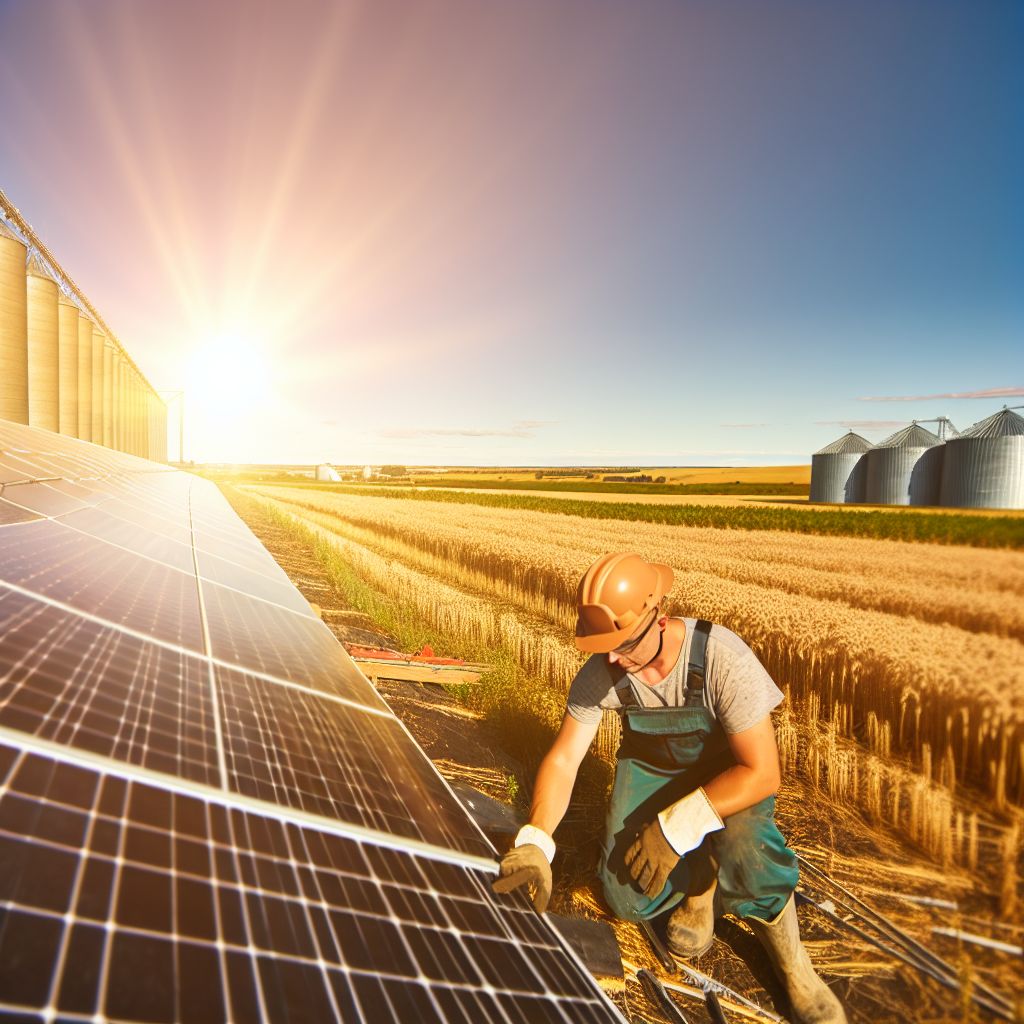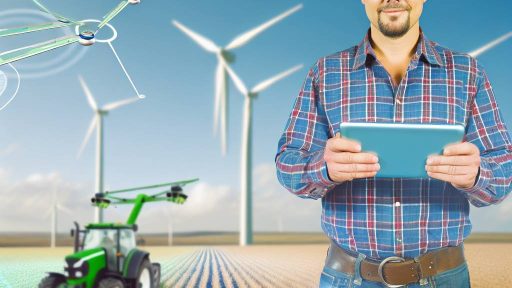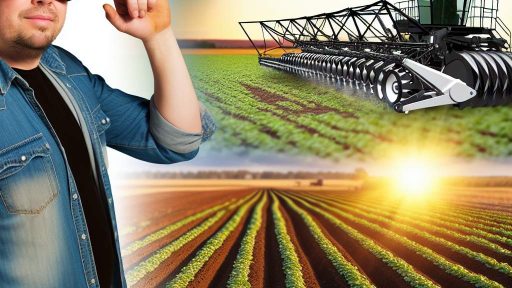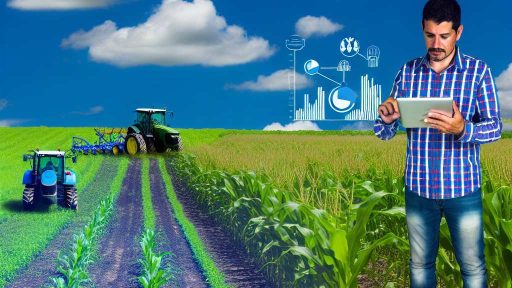Introduction to Solar Power Systems in Agriculture
Solar power systems are increasingly vital in modern agriculture.
They provide a sustainable energy source for diverse operations.
The integration of solar technology reduces reliance on fossil fuels.
Moreover, it lowers operational costs for farmers.
Benefits of Solar Power Systems
Solar power offers significant economic advantages for agricultural operations.
First, farmers can lower electricity bills due to reduced reliance on grid power.
This reduction improves overall profit margins.
Additionally, solar installations may increase property value.
Environmental Impact
Implementing solar power systems benefits the environment significantly.
They help reduce greenhouse gas emissions from traditional energy sources.
Furthermore, solar energy supports sustainable farming practices.
This contributes to the preservation of natural resources.
Applications in Agriculture
Solar power systems find various applications in agricultural activities.
They can power irrigation systems to enhance water management.
In addition, solar energy can fuel agricultural machinery.
Transform Your Agribusiness
Unlock your farm's potential with expert advice tailored to your needs. Get actionable steps that drive real results.
Get StartedFarmers also use it for greenhouse heating, promoting crop growth.
Adoption Trends
The adoption of solar power systems in agriculture is on the rise.
Many farming operations are transitioning to renewable energy sources.
This trend aligns with global sustainability initiatives.
Furthermore, government incentives encourage solar investments.
Challenges and Considerations
Despite the benefits, some challenges remain in adopting solar technologies.
Initial installation costs can be a significant barrier for farmers.
Moreover, not all agricultural locations are suitable for solar systems.
However, advancements in technology are reducing these challenges.
Benefits of Solar Energy for Modern Farming Practices
Cost Savings and Energy Independence
Adopting solar energy significantly reduces operating costs for farms.
Farmers benefit from lower electricity bills and predictable energy expenses.
Moreover, solar systems offer energy independence from utility companies.
This independence protects farmers from fluctuating energy prices.
Enhanced Sustainability
Solar energy promotes sustainability across agricultural practices.
It reduces reliance on fossil fuels, which contributes to pollution.
Additionally, solar panels lessen the carbon footprint of farming operations.
Farmers can market their products as eco-friendly, appealing to consumers.
Operational Flexibility
Solar power systems provide operational flexibility for modern farms.
They can be installed in various layouts, adapting to the farm’s needs.
This capacity allows farmers to harness energy in remote areas easily.
As a result, equipment and systems can operate efficiently anywhere.
Improved Productivity
The integration of solar energy boosts overall productivity in agriculture.
Enhanced energy availability supports advanced irrigation systems.
Consequently, farmers can optimize their yield with effective management.
Showcase Your Farming Business
Publish your professional farming services profile on our blog for a one-time fee of $200 and reach a dedicated audience of farmers and agribusiness owners.
Publish Your ProfileFurthermore, solar energy enables automation, decreasing manual labor needs.
Long-Term Reliability
Solar power systems are known for their long-term reliability.
With minimal maintenance, these systems remain operational for years.
Investing in solar energy is a commitment to future agricultural success.
Farmers can count on consistent power generation to support operations.
Key Components of Solar Power Systems for Agricultural Use
Solar Panels
Solar panels convert sunlight into electricity efficiently.
These panels come in various types, including monocrystalline and polycrystalline.
Choosing the right type is crucial for maximizing energy production.
Many farmers install solar arrays on rooftops or open fields.
Proper positioning optimizes exposure to sunlight throughout the day.
Inverters
Inverters play a vital role by converting direct current into alternating current.
They ensure compatibility with farm equipment and local energy grids.
Investing in high-quality inverters enhances system reliability and performance.
Regular maintenance checks will prolong their lifespan.
Battery Storage
Battery storage systems retain excess energy for later use.
This capability is essential for nighttime operations and cloudy days.
Farmers can choose from several battery types, depending on needs.
Lithium-ion batteries offer a longer lifespan compared to traditional options.
Mounting Structures
Mounting structures securely hold solar panels in place.
These structures must withstand various weather conditions.
Fixed mounts are common, but adjustable mounts optimize angle for energy capture.
Furthermore, tracking systems can automatically follow the sun’s path.
Monitoring Systems
Monitoring systems provide real-time data on energy production and consumption.
These systems alert farmers to potential issues early on.
Furthermore, data analysis enhances understanding of energy efficiency.
Farmers can adjust practices based on collected data for optimal results.
Connection to the Grid
Connecting solar systems to the local grid allows for energy sharing.
This connection can provide credits for surplus energy produced.
Farmers should consult local regulations for grid connection requirements.
Such connections can enhance financial sustainability over time.
Explore Further: Choosing The Right Crop Disease Detection Tools For Your Farming Needs
Types of Solar Power Systems: Grid-Tied vs. Off-Grid Solutions
Understanding Grid-Tied Systems
Grid-tied solar power systems connect directly to the utility grid.
These systems allow farmers to use electricity from the grid when solar power is insufficient.
Moreover, they can sell excess energy back to the grid.
This setup often requires no battery storage, simplifying installation and maintenance.
Additionally, grid-tied systems may leverage net metering for economic benefits.
Benefits of Grid-Tied Systems
First, they significantly reduce electricity costs for agricultural operations.
Second, they lower the carbon footprint of farming practices.
Third, these systems enable access to renewable energy incentives and rebates.
Moreover, grid-tied systems are easier to scale as energy needs evolve.
Showcase Your Farming Business
Publish your professional farming services profile on our blog for a one-time fee of $200 and reach a dedicated audience of farmers and agribusiness owners.
Publish Your ProfileAs a result, they are a popular choice for modern agricultural efficiency.
Exploring Off-Grid Solutions
Off-grid solar power systems operate independently of the utility grid.
These systems typically involve battery storage to maintain power supply.
They are perfect for farms located in remote areas without reliable grid access.
Additionally, off-grid solutions provide energy security during outages.
Farmers can customize these systems based on specific energy requirements.
Advantages of Off-Grid Systems
One key advantage is enhanced energy independence from utility providers.
This independence helps protect against rising energy costs.
Secondly, off-grid systems promote sustainable practices in agriculture.
They harness free solar energy, reducing reliance on fossil fuels.
This is crucial for environmentally responsible farming.
Choosing the Right System for Your Needs
Deciding between grid-tied and off-grid solutions depends on unique circumstances.
Farm size and energy demands play a central role in this decision.
If your farm is large and connects to a reliable grid, consider the grid-tied option.
Conversely, if you operate in a remote location, off-grid may be best.
Your local regulations and energy prices will also influence your choice.
Discover More: How Automated Machinery Enhances Crop Yields
Case Studies: Successful Implementation of Solar Systems in Farms
Introduction to Innovative Farming Solutions
Many farmers are adopting solar power systems to enhance operations.
These systems provide renewable energy options for agricultural tasks.
They also help reduce dependency on fossil fuels, boosting sustainability.
Case Study: Green Valley Organic Farm
Green Valley Organic Farm implemented a solar power system in 2022.
This system features 100 solar panels installed on their barn roof.
Consequently, the farm generated more than 30% of its energy needs.
Hence, the owners significantly reduced electricity costs.
Moreover, they were eligible for government incentives for renewable energy adoption.
Key Benefits Realized
- Cost savings on electricity bills.
- Increased energy independence.
- Positive impact on carbon footprint.
Case Study: Sunny Acres Vineyard
Sunny Acres Vineyard also adopted solar technology in its operations.
They installed a solar tracking system that adjusts to the sun’s position.
This technology maximizes energy capture throughout the day.
As a result, the vineyard can efficiently operate irrigation systems.
Enhanced Efficiency and Sustainability
The vineyard reports a 40% reduction in energy costs since installation.
This improvement directly benefits their profitability.
Furthermore, the sustainability initiatives appeal to eco-conscious consumers.
Consequently, these practices enhance their brand image.
Case Study: Harvest Moon Farm
Harvest Moon Farm focuses on sustainability through innovative solar solutions.
They integrated solar panels with a battery storage system.
Thus, they can store excess energy for use during cloudy days.
Long-term Financial Impacts
This allows them to maintain operations even during outages.
Moreover, it helps them save on energy costs long-term.
In addition, they successfully lower their carbon emissions by 50%.
The Future of Solar Energy in Agriculture
These case studies showcase the potential of solar power in farming.
Showcase Your Farming Business
Publish your professional farming services profile on our blog for a one-time fee of $200 and reach a dedicated audience of farmers and agribusiness owners.
Publish Your ProfileAdopting solar technology leads to significant financial and environmental benefits.
As more farms follow suit, the agricultural sector can achieve sustainability.
Uncover the Details: Best Practices For Using Imaging Technology In Crop Disease Detection

Financial Considerations
Initial Costs of Solar Power Systems
Investing in solar power systems requires significant initial capital.
The costs may depend on system size and installation complexity.
On average, a solar farm can cost between $100,000 to $500,000.
However, costs may vary by region and technology used.
Farmers should carefully evaluate available options.
Long-term Savings
Solar power systems offer substantial long-term savings on energy bills.
After installation, maintenance costs remain relatively low.
Typically, solar energy reduces reliance on grid electricity.
This reduction leads to lower monthly utility expenses.
Consequently, farms can allocate funds to other operational needs.
Incentives for Solar Adoption
Various incentives encourage farmers to adopt solar energy systems.
Federal tax credits can cover a significant percentage of installation costs.
Local and state programs may also provide grants and rebates.
These incentives enhance the financial viability of solar investments.
Furthermore, many utility companies offer net metering programs.
Financing Options
Farmers have multiple financing options for solar system adoption.
Purchase agreements allow for direct ownership and benefits.
Leasing options can reduce initial out-of-pocket costs significantly.
Power Purchase Agreements (PPAs) provide yet another alternative.
These agreements allow farmers to pay for the energy produced.
Break-even Analysis
Understanding the break-even point is crucial for financial planning.
This analysis helps farmers assess when they will recoup their initial investment.
Break-even periods typically range from five to eight years.
Factors influencing this period include energy savings and incentives received.
Learn More: Enhancing Food Safety With Blockchain In Agricultural Supply Chains
Challenges and Solutions in Implementing Solar Power in Agriculture
Understanding the Challenges
Many farms face financial obstacles when adopting solar technologies.
Initial installation costs can be significant for small and medium-sized farms.
Moreover, farmers may lack information about available subsidies and incentives.
Technical challenges also arise regarding integration with existing systems.
Additionally, farmers may encounter regulatory hurdles during installation.
Seasonal variations in sunlight can affect energy production consistency.
Finally, maintaining solar equipment can add to operational complexities.
Financial Solutions
Farmers can explore various financing options to mitigate costs.
Accessing government grants and incentives can significantly reduce expenses.
Cooperative purchasing groups can help diminish the installation costs.
Furthermore, leasing arrangements allow farmers to use solar systems without upfront costs.
Technical Solutions
Working with experienced solar providers can ease integration challenges.
Showcase Your Farming Business
Publish your professional farming services profile on our blog for a one-time fee of $200 and reach a dedicated audience of farmers and agribusiness owners.
Publish Your ProfileCustomized solutions can address the specific energy needs of individual farms.
Utilizing energy storage systems enhances efficiency and reliability.
Continuous monitoring can optimize system performance over time.
Regulatory Solutions
Staying informed about local regulations helps avoid compliance issues.
Engaging with local authorities may facilitate smoother project approvals.
Advocacy from agricultural organizations can influence favorable regulatory changes.
Enhancing Energy Production
Implementing dual-use systems allows simultaneous agricultural production and energy generation.
Developing solar farms on underutilized lands maximizes space efficiency.
Investing in advanced solar technologies can improve energy capture rates.
Monitoring and Maintenance Strategies
Establishing a regular maintenance schedule ensures equipment longevity.
Training staff on system operation fosters efficiency and problem identification.
Utilizing remote monitoring tools helps promptly address issues.
Future Trends in Solar Technology for Agricultural Operations
Emerging Photovoltaic Materials
New photovoltaic materials are revolutionizing solar energy efficiency.
Perovskite solar cells offer higher efficiencies at lower costs.
Additionally, tandem cells can significantly boost energy output.
These advancements make solar energy more accessible for farmers.
Integration with Smart Farming
Smart farming practices will increasingly integrate solar power systems.
Data analytics will optimize energy consumption on farms.
Automated systems will manage energy use based on real-time data.
This integration enhances overall operational efficiency.
Innovative Storage Solutions
Energy storage technology will advance significantly in the coming years.
Batteries will become more efficient and affordable for farmers.
Farmers can store solar energy for use during high-demand periods.
This capability ensures a stable energy supply regardless of sunlight.
Government Support and Incentives
Government initiatives will increasingly support solar technology adoption.
Subsidies and tax incentives will encourage farms to invest in solar power.
Such support will make solar systems financially viable for more operations.
Farmers will benefit from reduced energy costs and increased profitability.
Collaborative Research Efforts
Collaboration between businesses and research institutions will expand.
Projects will focus on developing advanced solar technologies tailored for agriculture.
These partnerships will facilitate innovation in solar applications.
Farmers will gain access to cutting-edge solutions for their energy needs.
Localized Energy Solutions
Localized solar energy solutions will empower rural communities.
Community solar projects will enable shared energy resources.
Farmers can participate in these initiatives, enhancing energy independence.
This model fosters collaboration among farmers and community members.
Additional Resources
Rural Energy for America Program Renewable Energy Systems …
Cows and Solar Panels? In a New Jersey First, Project Melds …




